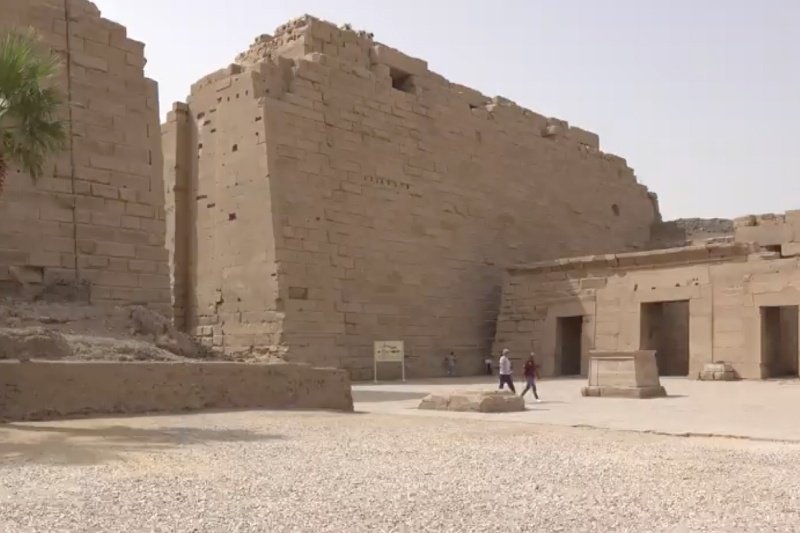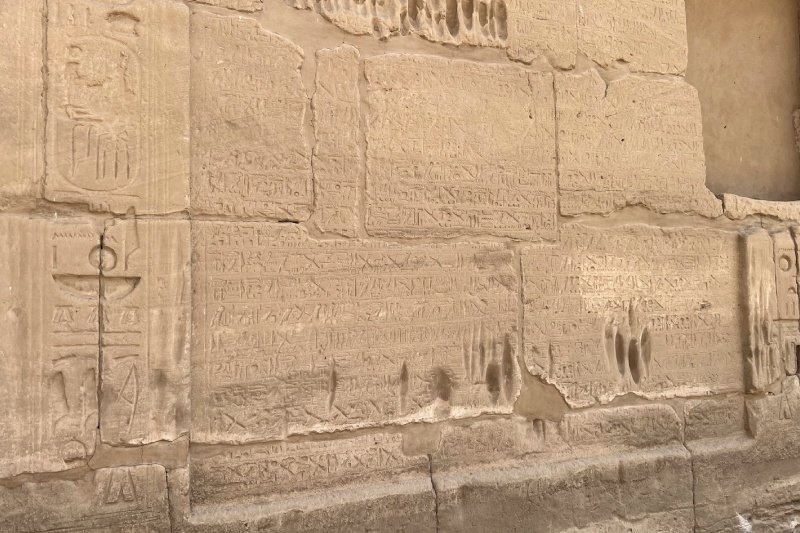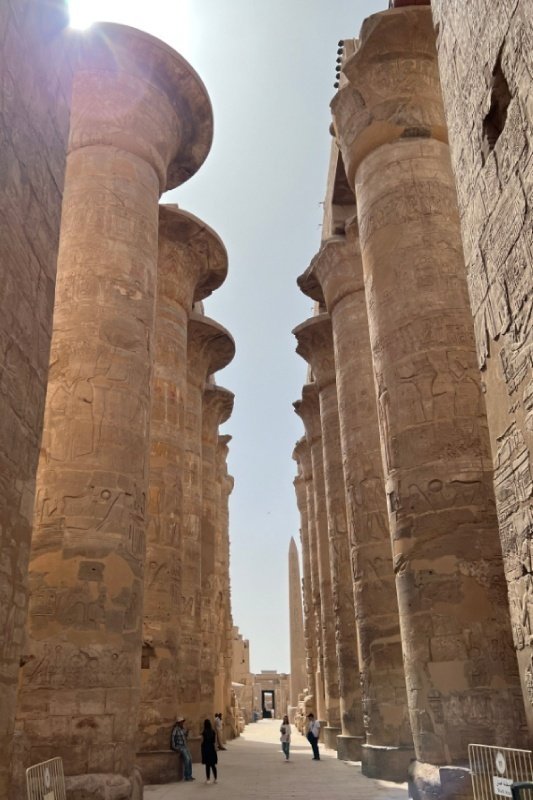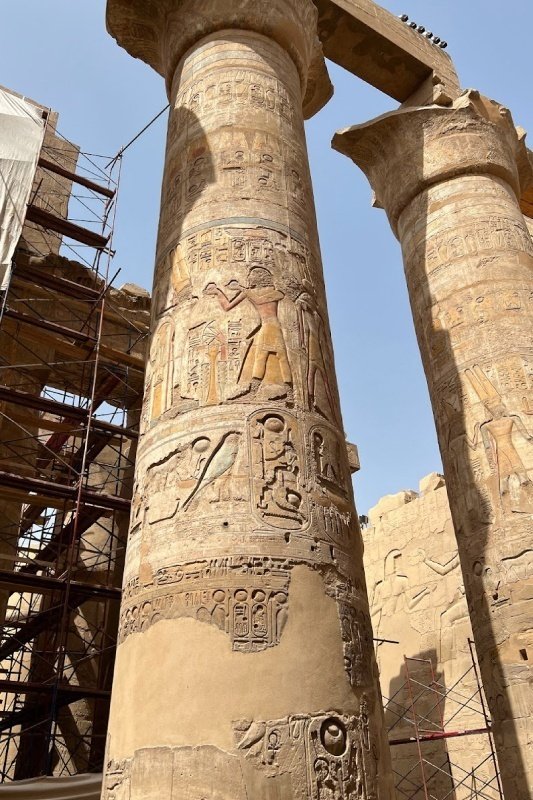
Karnak Temple 3D Scanning Project - WORLD SCAN PROJECT’s Challenge
In ancient Egypt, temples were not only places to worship the gods, but also to demonstrate the power and divinity of the pharaohs. Among the many temples richly imbued with the religious and artistic sensibilities of the time, the Temple of Karnak stands out for its sheer scale.
In this article we, the World Scan Project (W.S.P.), will present the Temple of Karnak, located on the east bank of Luxor, along with the results of our research.
The Majestic Temple of Karnak
Construction of the Karnak Temple began around 2000 B.C. during the Middle Kingdom era and continued into the Greco-Roman period, spanning some 2000 years. Successive pharaohs expanded the complex outward to include numerous temples, gateways, and shrines, covering an area of 100 acres.

At the center of the temple complex is the Great Temple of Amun, which served as the focal point of the New Kingdom's Theban Triad, which revolved around the god Amun. This underscores its role as a symbol of ancient Egypt's religious and political power. The Avenue of Sphinxes, built in front of the first pylon, reflects the worship of Amun with sphinxes bearing the head of a ram, the sacred animal of Amun-Ra, Egypt's supreme deity, lined up in formation.


Passing through the first pylon into the courtyard one finds the barque shrines built by Seti II and Ramesses III, where the triad of Amun-Ra, his consort Mut, and their son Khonsu were each worshipped in their respective shrines.

his consort Mut, and their son Khonsu, constructed by Seti II.
Statue of Ramesses II
Among the colossal statues at Karnak Temple, the most famous is the statue of Ramesses II, made of red granite and stands about 10 meters tall. Ramses II, known as the greatest king of ancient Egypt, was a pharaoh of the 19th dynasty during the New Kingdom period. He led Egypt from a state of decline to a position of strength and achieved numerous feats, including the signing of the world's first peace treaty.

the text of the peace treaty concluded by Ramesses II
During his 70-year reign, he also focused on building monumental constructions, earning him the nickname "The Great Builder". At the temple of Karnak, he expanded the complex by adding a courtyard in front of the then outermost second pylon and commissioned the construction of his own massive statue, which is now severely weathered.
There is one well-preserved statue that originally bore the name of Ramesses II. However, it was later altered by the high priest of Amun at Thebes Pinudjem I, who inscribed his own name on it, leading to its current designation as the "Colossal Statue Of Pinudjem."


In addition, Karnak Temple contains numerous reliefs and sculptures that pay homage to Ramesses II, including those on the second pylon. Among them is a relief depicting Ramses II transporting the divine statues made of gold on a boat-shaped portable shrine and passing through the great hypostyle hall to perform the ritual.

The Great Hypostyle Hall
The Great Hypostyle Hall, through which the divine barks of the gods passed, was constructed to evoke the primeval swamp overgrown with papyrus plants. It features twelve centrally located open papyrus blossom capitals, approximately 21 meters high, representing the stems and flowers of the papyrus plant, and 122 closed-bud papyrus columns, approximately 15 meters high, for a total of 134 columns.
A visual trick was also used to take advantage of the difference in height between the columns to allow light into the dimly lit room, with only the twelve illuminated columns designed as open papyrus blossom capitals, creating an almost mystical space that seems to invite visitors into the realm of the gods.
The surfaces were decorated with the reliefs of kings and gods, hieroglyphs, and more. Thanks to restoration efforts, it's possible to witness the vibrant appearance of this space as it would have looked over 3000 years ago.

colossal columns modeled after papyrus

vertical lattices for illumination

the time of their construction
A Towering Obelisk
Continuing through the Great Hypostyle Hall one reaches the fourth and fifth pylons, which were the outermost boundaries during the 18th Dynasty. The obelisk of Thutmose I is placed at the entrance of the fourth pylon and the obelisk of Queen Hatshepsut is placed at the entrance of the fifth pylon.
Among the obelisks still standing at Karnak Temple, the obelisk of Queen Hatshepsut is the largest with a height of 30 meters and a weight of 323 tons. Its upper part is beautifully inscribed with Hatshepsut's titles, while the lower part describes the circumstances of the erection of the obelisk.


Sanctuary of Karnak Temple
Beyond the sixth pylon is the holiest place in the temple of Karnak, the Sanctuary. Originally, the god Amun was worshipped in the Theban region as the deity of the air, but when Thebes became the capital during the Middle Kingdom, Amun merged with the ancient and important sun god Ra, thus expanding the worship of Amun-Ra.
The existing sanctuary contains a stone pedestal for the divine barque carrying the statues of the god, and the walls are decorated with murals depicting priests burning incense during the ritual of changing the clothes of the statue of Amun-Ra. In addition, the foundations of the oldest temple at Karnak have been discovered behind the sanctuary, indicating that this sacred area was the focal point around which successive pharaohs expanded, eventually creating the largest temple complex in Egypt.

Making the world, the future, and curiosity closer
Constructed by successive pharaohs to manifest their power, divinity, and devotion to the god Amun, Karnak Temple represents the pinnacle of ancient Egyptian technological prowess and artistic finesse. The architecture and decoration of the temple, with murals and reliefs intricately depicting myths and historical events, are historically significant artifacts.
The World Scan Project (W.S.P.) has meticulously recorded every detail of this magnificent temple using 3D scanning technology to ensure high accuracy. It allows for an accurate understanding of the original condition, even in the event of damage due to human action or the passage of time, aiding in restoration efforts.

In addition, by applying the data preserved as digital archives to VR and the metaverse, we aim to increase interest in and awareness of preservation by allowing researchers and the general public worldwide to explore the interiors of temples and learn about their historical contexts.
Our dream and mission is to use digital technology to pass on ancient knowledge and culture to future generations.We invite you to follow the activities of the World Scan Project and join us on our journey.
Please also check out this video about Karnak Temple.
この記事が気に入ったらサポートをしてみませんか?
